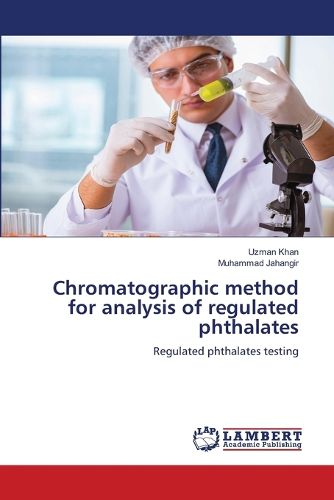Readings Newsletter
Become a Readings Member to make your shopping experience even easier.
Sign in or sign up for free!
You’re not far away from qualifying for FREE standard shipping within Australia
You’ve qualified for FREE standard shipping within Australia
The cart is loading…






This title is printed to order. This book may have been self-published. If so, we cannot guarantee the quality of the content. In the main most books will have gone through the editing process however some may not. We therefore suggest that you be aware of this before ordering this book. If in doubt check either the author or publisher’s details as we are unable to accept any returns unless they are faulty. Please contact us if you have any questions.
Recently regulated phthalates do not have validated methods for testing hence their presence cannot be estimated in the consumer products. So, a rapid, sensitive and reliable method was developed for the separation and quantitative analysis of all 28 regulated phthalate contents from the childcare items, toys, and textile test specimens. Test specimens were extracted in tetrahydrofuran at 60 degreesC and 60 min sonication and purified by centrifugation and filtration. Phthalate contents were separated on a DB-5MS column using helium gas as mobile phase under Sim/Scan mode. Pre-treatment factors such as extraction solvent, extraction method, dilution ratio, extraction time were optimized. Under the optimized conditions, the targets had good linearity (r2 >= 0.9995) in the range of 0.2 - 10.0 mg L-1. Recoveries were between 100 +/- 15 % for the target analytes. Limit of quantification (LOQs) was between 0.03 - 0.05 mg L-1. The developed analytical method has been successfully applied for extraction of regulated phthalates from real test specimens containing multiple type of matrices. Detected phthalates were in the range of 5.18 mg L-1 to 1798.14 mg L-1.
$9.00 standard shipping within Australia
FREE standard shipping within Australia for orders over $100.00
Express & International shipping calculated at checkout
This title is printed to order. This book may have been self-published. If so, we cannot guarantee the quality of the content. In the main most books will have gone through the editing process however some may not. We therefore suggest that you be aware of this before ordering this book. If in doubt check either the author or publisher’s details as we are unable to accept any returns unless they are faulty. Please contact us if you have any questions.
Recently regulated phthalates do not have validated methods for testing hence their presence cannot be estimated in the consumer products. So, a rapid, sensitive and reliable method was developed for the separation and quantitative analysis of all 28 regulated phthalate contents from the childcare items, toys, and textile test specimens. Test specimens were extracted in tetrahydrofuran at 60 degreesC and 60 min sonication and purified by centrifugation and filtration. Phthalate contents were separated on a DB-5MS column using helium gas as mobile phase under Sim/Scan mode. Pre-treatment factors such as extraction solvent, extraction method, dilution ratio, extraction time were optimized. Under the optimized conditions, the targets had good linearity (r2 >= 0.9995) in the range of 0.2 - 10.0 mg L-1. Recoveries were between 100 +/- 15 % for the target analytes. Limit of quantification (LOQs) was between 0.03 - 0.05 mg L-1. The developed analytical method has been successfully applied for extraction of regulated phthalates from real test specimens containing multiple type of matrices. Detected phthalates were in the range of 5.18 mg L-1 to 1798.14 mg L-1.